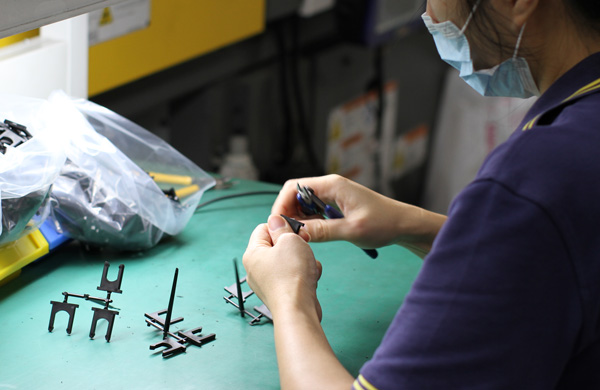The occurrence of flash in injection molding processes is often a headache. Its causes are complex, involving multiple aspects such as injection molding equipment, mold design, injection molding process, and raw materials. This article will delve into the roots of the flash phenomenon in injection molding from these four dimensions.
I. Injection Molding Equipment Factors
Firstly, the clamping force of the injection molding machine is a key factor related to the generation of flash. When selecting injection molding equipment, it is essential to ensure that the rated clamping force of the injection molding machine is higher than the tension formed by the vertical projection area of the product during injection. Otherwise, insufficient clamping force will lead to mold swelling, and flash will appear on the parting surface.
Secondly, the adjustment of the mold clamping device is also crucial. If the mold is not parallel or the mold clamping device is not properly adjusted, flash will easily appear on the parting surface during injection. In addition, if the mold itself is not parallel or is not installed parallelly, it may also result in tight mold closure, leading to flash on the parting surface.
II. Mold Design Aspects
The precision of the mold directly affects the quality of injection molding. When the flatness of the mold core is poor, a gap will be generated during mold closure, laying the groundwork for the appearance of flash on the parting surface. Therefore, improving the precision of the mold is one of the effective ways to reduce the flash phenomenon.

III. Injection Molding Process Factors
The pressure, speed, and amount of material added during the injection molding process all have a significant impact on the generation of flash. Specifically:
If the pressure or speed during injection molding is too high, it will increase the mold opening force, resulting in material overflow and the formation of flash.
An excessive amount of material added will also lead to the generation of flash. Too much raw material cannot fully fill the mold during injection, and some plastic will overflow to form flash.
If the temperature of the injection cylinder, nozzle, or mold is too high, it will reduce the viscosity of the plastic and increase its fluidity, thereby increasing the risk of flash on the parting surface.
IV. Raw Material Factors
The characteristics of the raw materials are also important factors affecting the generation of flash.
If the viscosity of the plastic material is too high or too low, it may lead to the appearance of flash on the parting surface. When the viscosity is too high, the plastic has poor fluidity and is prone to accumulate on the parting surface to form flash; when the viscosity is too low, the plastic has good fluidity and is prone to overflow from the mold to form flash.
Uneven size of plastic particles will also lead to variations in the amount of material added to the cylinder, affecting the stability of injection molding and increasing the probability of flash on the parting surface.
In summary, the generation of the flash phenomenon in injection molding is the result of the combined effect of multiple factors. To effectively solve this problem, it is necessary to start from multiple aspects such as injection molding equipment, mold design, injection molding process, and raw materials, considering and optimizing comprehensively.